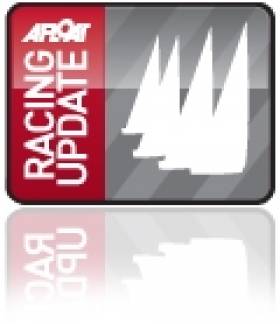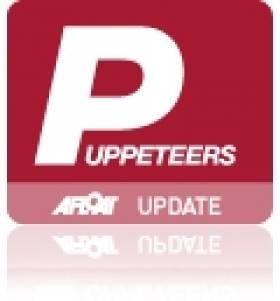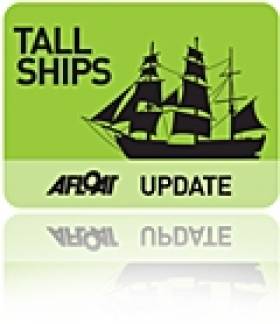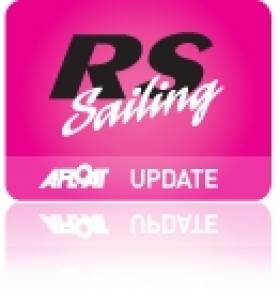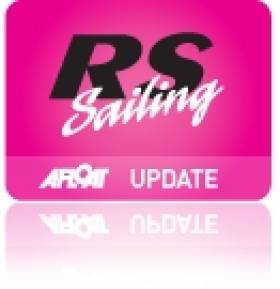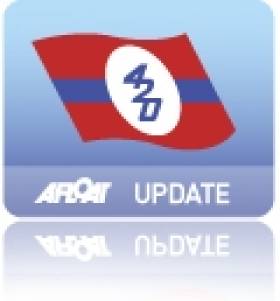Displaying items by tag: Howth Yacht Club
Howth Yacht Club Prepares for Autumn League
#autumnleague – Howth Yacht Club's Autumn League, which is expected to attract over 130 entries, starts next Sunday 16th September and runs for six weeks until late October.
Racing will be provided for 10 classes - five cruiser classes and five one-designs - Etchells, J/24s, Puppeteers, Squibs and Howth 17s.
The successful format will be repeated - namely, six round-the-cans races on five successive Sundays and the final day's racing on Saturday 20th October.
The Heineken Trophy will be presented to the best overall winner and the Olympus Trophy will go to the best team of three boats (each boat from a different class) declared before the first race.
"We are looking forward to another competitive series," said event chairman James Markey, "and can guarantee our usual high standards of race management and après-sailing activities."
Howth Add BMW as Sponsor for 2013 J24 Worlds
#j24 – BMW Ireland has been confirmed as the title sponsor of the J/24 World Championship at Howth Yacht Club in late August 2013 when up to sixty boats from thirteen countries are expected to compete.
One of the major regattas on the Irish sailing calendar for next year, the BMW J/24 Worlds has already attracted interest from J/24 sailors in the USA, Canada, UK, Netherlands, Hungary, Sweden, France, Japan, Monaco, Italy, Germany and Greece.
Racing will take place over five days (August 26th-30th) and will be preceded by registration, measurement and practice from the 22nd. The Principal Race Officer will be ISAF International Race Officer David Lovegrove (IRL) while ISAF International Judge Bob Milner (UK) will chair the International Jury.
The J/24 is the biggest and most widespread one-design keelboat class in the world with fleets in 32 countries and is sailed in half a dozen bases in Ireland. Twelve Irish boats have already qualified for the Worlds after a series of regional and national championships over the past two seasons.
"We are delighted that BMW Ireland has agreed to continue its support of major sailing events at Howth, having sponsored the 2011 J/24 Europeans and this year's ICRA Cruiser Nationals. The partnership has worked well and we look forward to a top class event next year," said Derek Bothwell, Chairman of the organising committee.
John Ives, Managing Director of BMW Ireland, added: "Our connection with sailing and, in particular, our experience with those two major events means we are only too happy to work with Howth Yacht Club again to support such a prestigious world-class event in Ireland."
Howth Yacht Club has previously hosted seven World and European Championships in the past, testimony to its ability to host major regattas. The BMW J/24 Worlds is the biggest event in a programme of 15 local, national and international events being staged by the club in 2013.
Royal St. George Yacht Wins Shipman Champs at Howth
#shipman – Christine Heath's Shipman Gusto was the winner of the 13-boat Shipman National Championships at Howth Yacht Club on Saturday. Full results are available to download below as a jpeg.
Heath's Royal St. George entry was just one entry from the four Dun Laoghaire clubs, RStGYC, NYC, RIYC and DMYC who competed in the four race event.
Eclipse Wins Puppeteer Nationals at Howth
#puppeteers – Robin Hegarty sailing Eclipse won the Puppeteer National Championships at Howth Yacht Club yesterday but only by half a point margin with former IDRA 14 champion Terry Harvery second. The Sutton Cross Pharmacy event attracted 17 entries. Full results downloadable below.
Howth Yacht Club to Officiate Tall Ships Send-Off on Sunday
#TALL SHIPS - Howth Yacht Club has announced that its vessels and race management teams have been asked to provide the official send-off for the Tall Ships Races fleet, which will take place in the centre of Dublin Bay at 6pm this Sunday.
HYC's members will be making a beeline for the bay after the completion of this weekend's Puppeteer National Championships in Howth - not to mention the spectcle of the Parade of Sail which kicks off at 1pm. HYC suggests the Howth Head cliff path between the summit and Redrock as a prime spot to watch the tall ships depart.
The club also urges members who wish to sail to the Liffey to see the Tall Ships Races fleet tomorrow to observe Dublin Port's notice to mariners for the festival.
Sightseeing craft will only be allowed past the Eastlink bridge for no more than 30 minutes at 10am, 12pm, 3pm and 7pm and may only navigate the Liffey as far as the Samuel Beckett Bridge. Extra toll bridge opening times may be added as demand dictates.
Dedicated escorting craft will be on hand to ensure a smooth procession. Sightseeing craft will not be allowed to go alongside the berths or vessels in the Tall Ships fleet, and no personal water craft such as Jet Skis or kayaks will be permitted.
Full details are included in the Dublin Port Company Notice to Mariners No 16 of 2012.
Success for Royal St George Teams at Irish RS Nationals
#RS SAILING - Howth Yacht Club hosted 54 boats in three classes for the RS400, RS200 and RS Feva National Championships over the weekend (click HERE for photos).
The Irish version of the 'RS Games' proved a big hit with all competitors. The race management team, headed by PRO David Lovegrove, did a fantastic job to get 10 races in for all three classes in spite of some shifty conditions.
This was all the more impressive as each course change required the moving of up to 10 marks. No mean feat, but the Howth Yacht Club team took it in their stride.
In the RS400 class, bothers Emmet and James Ryan from the Royal St George Yacht Club took the top spot. They didn’t make things easy by using up a discard on the first race of the event and only snatched the win on the last run of the last race having rounded the final weather mark in fourth place.
Greystones class stalwarts Simon Herriott and Tom Moran took second place, while in third place, and the top youth RS400 team, was a very impressive display by Andy Verso and Oisin Baugh, also from Greystones.
In the RS200 class it was another family affair and another Royal St George win with father-and-son pair Sean and Stephen Craig taking first place. It was extremely tight at the top of the 200 fleet with only three points separating the top four boats in the end.
Teams from Greystones filled the next two podium places with Frank and Kevin O’Rourke taking second and last year’s champions Roy Van Maanen and Glen Reid taking third place.
In the Feva class, GB sailors filled the top three slots with Elliott Wells and Jake Todd taking the title on count back from fellow Hayling Island sailors Tom Darling and Will Dolin. Chay and Stirling Taylor took third place.
In the battle for local/Irish bragging rights, Eoin Lyden and Brian Stokes from Cork got one over the Dublin rivals to claim top Irish Feva spot.
Full results can be found at the Howth Yacht Club website at www.hyc.ie, while photos of the event are available HERE.
#rs – Greytones sailors occupy the top three places of the RS200 national championships fleet after three races sailed in Howth today. Roy Van Maanen and Glen Reid lead from clubmates Graeme Noonan and Brian McCarthy. Full results here. In the 24 boat Feva class UK travellers Elliot Wells and Jake Tood from Haylng Island SC are the leaders after three races. There are no results currently posted in the RS400 class also competing in Howth. Scroll down for photos by Gareth Craig.
Irish Yacht Rewarded With Huge Trophy Haul After Ramsgate Voyage
#halftonner – Howth half tonner King One finished Ramsgate Week on the East Coast of England last Saturday with five firsts and discarded a second to be top scoring boat of the regatta. The Royal Temple Yacht Club in Ramsgate provided a huge welcome for their first ever Irish entrant which proved hugely popular with competitors and organisers alike.
Skipper Dave Cullen with his crew of Aidan Beggan (main), Andy George (Trim), Grainne Beggan (Pit), Rob Kerley (Bow) and James Hynes (Trim/Tactics) enjoyed a tiring week that had this sociable crew in bed by 11:00pm on some evenings!
The regatta which was sailed in 20-25 knots was split into two, the first being the three day Ramsgate Coastal Series where one long race was sailed each day. In a varied class, King One won two races with one day lost to lack of wind.
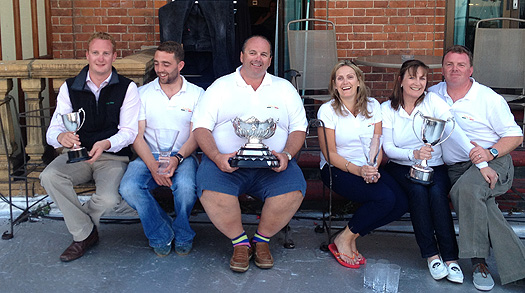
Irish visitors – (L-R) Andy George, Rob Kerley, David Cullen, Deirdre Cullen, Grainne Beggan, Aidan Beggan
The second series was the Ramsgate Week Regatta Series and the fleet was enlarged to include the heavy artillery of the Belgian half ton fleet joining in. The series kicked off with the famous Round the Goodwins
offshore race. Sailed in 20-32 knots of breeze, King One won this race with a corrected margin of over half an hour ad enjoyed a fantastic sleigh ride with speeds hitting 15 knots at times. There followed a day with two shorter races and again King One excelled to win both with ease. With the regatta won with a day to spare, the final day became a fantastic match race with hot shot half tonner, General Tapioca from Belgium and the lead changing six times, again with King One taking victory. Whilst this match race was on, Belgian Half Tonner A+ caught up to take first on corrected leaving King One second.
King One was rewarded with a huge haul of trophies, cups and prizes and skipper David Cullen made the competitors' thank you speech at the prize giving presenting Commodore Mike Brand with a HYC burgee to add to their collection.
Next year it is Boulogne for King One for the Half Ton Cup!
ISAF Youth Pair Lead 420 Nationals at Howth Yacht Club
#420dinghy – Ireland's ISAF Youth Worlds competitors from July Patrick Crosbie and Grattan Roberts are the top of the 420 National championships fleet as the regatta enters the final stages off Howth today. The Royal Cork Yacht Club (RCYC) pairing are five points clear from Royal St. George pair Adam Hyland and Bill Staunton. Third is Galway Bay Sailing Club's Cian Walsh and Fiachra McHugh are next on neet points but some 12 points adrift.
Racing continues at Howth Yacht Club this afternoon in the 16-boat fleet.
#HOWTH YACHT CLUB - Children's charity Variety Ireland celebrated the return of its 'Boat for Hope' event at Howth Yacht Club at the weekend.
Almost 60 vessels of all shapes and sizes were used to bring special needs children and their families and carers from HYC out to Balscadden Bay for a pirate adventure on the high seas.
Dressed as pirates, the youngsters teamed up with Captain Rocket and his buccaneer crew aboard Mick Hunt's 'Pirate Ship', helping to offload his treasure - with a little help from the Howth Yacht Club RIB team - while coastguard and lifeboat vessels attacked with water cannon fire!
After all that excitement, the kids were treated to a tour of the fishing harbour where the resident seals demonstrated their swimming skills, followed by some proper clowning around and a BBQ lunch in the marquee on the green.
Organisers described it as a "very special day for the children and their families" and thanked the hundreds of supporters and volunteers who made it all happen.
Howth Yacht Club also thanked the sponsors and services that provided support, including the Dublin Fire Brigade, the Red Cross Ambulance Service, Howth Coastguard and Howth RNLI, as well as guests such as Fingal Mayor Cian O'Callaghan, Harbourmaster Capt Raja Maitra, Terrance Flanagan TD and co-ordinators from the Variety Club of Ireland.




























